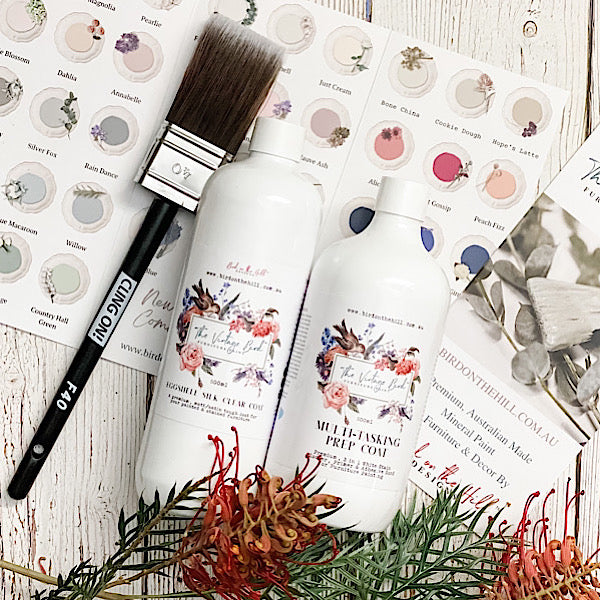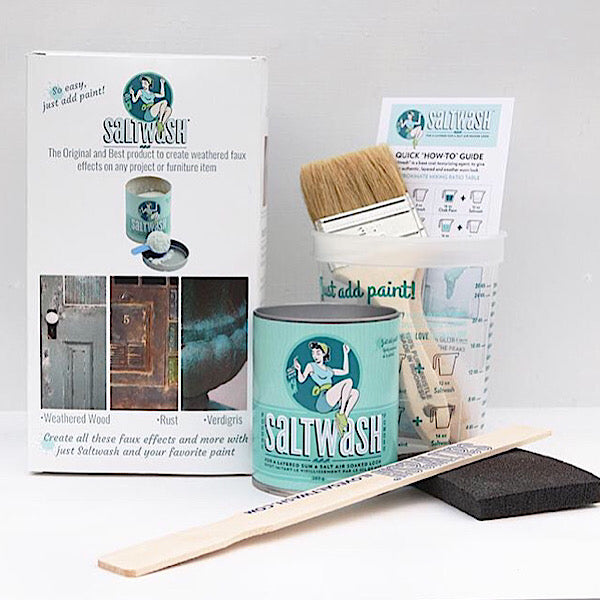So you have painted your old piece of furniture, stood back and admired your masterpiece and thought " I love it!".
It's such a good feeling, isn't it?
So now you have a goregeous "new" piece of furniture, you are going to want to look after it so it stays looking good for years to come.
This is when you will need to make a choice about how you will protect your piece.
There are a quite a few options out there and it can get a little confusing, so here is a run down of things I have used and what has worked best for different needs.
1. Bees wax clear wax paste.
You can't beat wax for that beautiful satiny finish that looks great, isn't too shiny and gives your painted furniture a beautiful depth and richness you just can't achieve with any other finish. Wax is the traditional finish of choice for porous paints like chalk and milk paint and has been used for a very long time.
Wax finishes will last for a long time, but to best protect your furniture you may need to re-apply every 6-12 months. Wax seals the porous paint by creating a top layer, but it doesn't offer much in way of moisture or heat resistance, and it can be a little tricky trying to clean off grubby marks (thinks sticky, little finger prints...) For me, this means that I limit waxed surfaces to pieces that are very "low traffic". I use on things like photo frames, candle sticks, lamp bases, hall tables, and mirror frames for example. If I have things that are moderate to high traffic like coffee tables, bedsides, TV units, stools, chairs, and kitchen cabinets, I wouldn't use wax due to it's more frequent up keep and maintenance. Waxing is easy and provides a beautiful finish, so defintaltey somehitng I still use quite a lot on those smaller pieces.
2. Hemp finishing oil.
Hemp oil is truly a furniture painters best friend. It is the easiest of the finishes to use, is virtually fool proof, looks great and has the bonus of being moisture resistant, chip resistant and still allows you to wipe grime from your painted surface. There are other oils that have also been used traditionally for furniture finishes such as linseed oil, but when it comes to matt painted finishes, hemp oil is the stand out.
Hemp Oil is different to the other finishes discussed here because it doesn't just create a surface layer on top of the paint. It actually sinks down through the paint layers, attaches to the substrate and creates a complete profile of protection. It is also very nourishing so if you have painted unfinished timber, the oil will penetrate through the paint down to this layer and help feed the timber with the moisture it needs, minimising drying, cracking and warping. This is why I recommend leaving your oil on overnight after application - to allow for the oil to soak right down through the paint profile to the timber.
Hemp oil is also great because it's the easiest finish to apply. Just brush on, wipe off and buff lightly. It won't give you the richer, satiny sheen you get with wax, but it enriches the colour of the painted surface and provides a very gentle low sheen. If you have a dehydrated piece of furniture ( older hardwoods often fit this description), or you are painting onto raw, unfinished timber, you may need two coats of oil to offer the best protection.
3. Polyurethane sealers
Poly sealers will provide great protection for your painted furniture. Which one you choose will be determined by the look you are trying to achieve and how much use your piece will get. Sealers come in three different finish types: Gloss, Semi-gloss (Satin) and Matt. If you have chosen to paint your furniture with a matt paint as you love the look of shabby chic/vintage style furniture, you probably don't want to paint over it with a high gloss sealer. How matt a sealer is depends on the brand. Some I have tried have been very flat and some I wouldn't actually call matt, but rather, a satin finish. The two brands I use are Cabots in Matt (more a satin finish) and Rustoleum Chalked range, matt sealer. This one is a very flat, matt finish, but the Cabots is easier for maintenance because it has a little more sheen.
I don't find poly sealers particularly easy to apply, and find to get a good finish, I need to apply in very light coats and sand lightly between coats. It is really hard not to get any air bubbles or brush marks, and if you use a cloth, you may still end up with some streaky marks. I guess it's trial and error! These types of sealers are good for surfaces in bathrooms, coffee tables, dining tables etc...
Another down fall for me with poly sealers, is their tendency to Yellow in appearance over time, which means on lighter coloured furniture you will have a colour change after about 12 months.
My "go to" these days is Hemp oil as it is so easy, provides a great finish, protects my piece, and very importantly, if I change my mind about colour, it just needs a light sand to be ready to paint over again.
Hope this is helpful. Don't hesitate to get in touch if you have any questions about the different finishes. Our wax and hemp oil are sourced in Australia, and do not contain any solvents or other nasties. Our hemp oil is safe for all surfaces, including food prep areas and children's furniture and toys.
Keep an eye out for our upcoming blog posts on the "how to" of application for wax and oil.
Cheers, and happy painting,
Corrina




